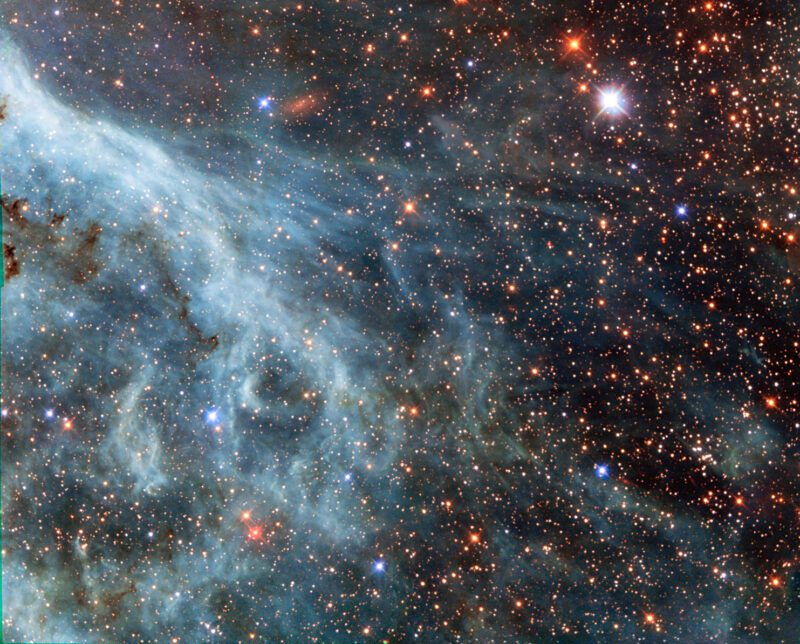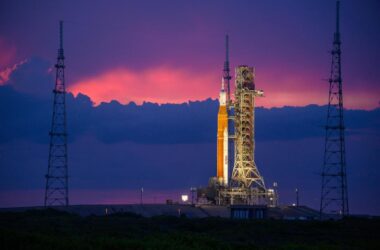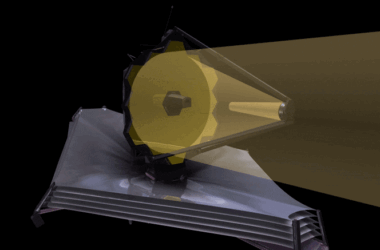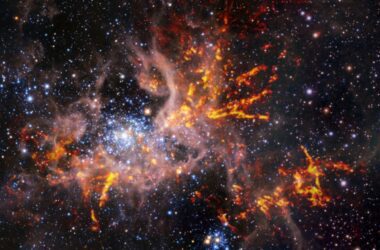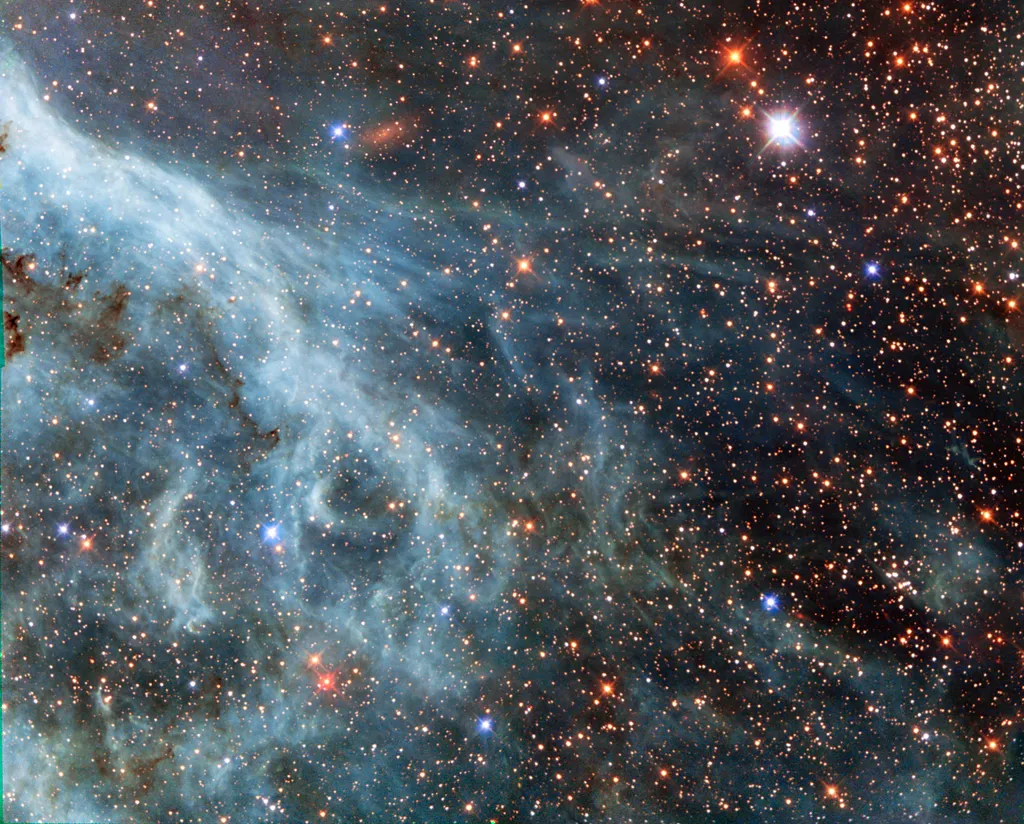
Une image du télescope spatial Hubble montre une partie de la périphérie de la nébuleuse de la Tarentule. Cette célèbre et magnifique nébuleuse, située dans le Grand Nuage de Magellan, est une cible fréquente de Hubble. Crédit : ESA/Hubble & ; NASA, Remerciements : Josh Barrington
Dans ce Hubble Space Telescope image from 2014, brightly glowing plumes of the Large Magellanic Cloud (LMC) appear almost like an ocean current with turquoise-tinted currents and nebulous strands reaching out into the surroundings.
This stunning image shows part of the Tarantula Nebula’s outskirts located within the LMC, a small nearby galaxy that orbits the Milky Way and appears as a hazy blob in our skies. Hubble has peered into this galaxy many times, releasing stunning images of the sparkling stars and whirling clouds of gas.
The color in most images of the LMC is completely different from that seen here. For this image, researchers substituted the customary R filter, which selects the red light, and replaced it with a filter letting through the near-infrared light. In traditional images, the hydrogen gas appears pink because it shines most brightly in the red. Here, however, other less prominent emission lines dominate in the blue and green filters.
This data is part of the Archival Pure Parallel Project (APPP), which gathered together and processed over 1,000 images taken using Hubble’s Wide Field Planetary Camera 2, obtained in parallel with other Hubble instruments. Much of the project’s data could be used to study a wide range of astronomical topics, such as gravitational lensing and cosmic shear, exploring distant star-forming galaxies, supplementing observations in other wavelength ranges with optical data, and examining star populations from stellar heavyweights ranging all the way down to solar-mass stars.
